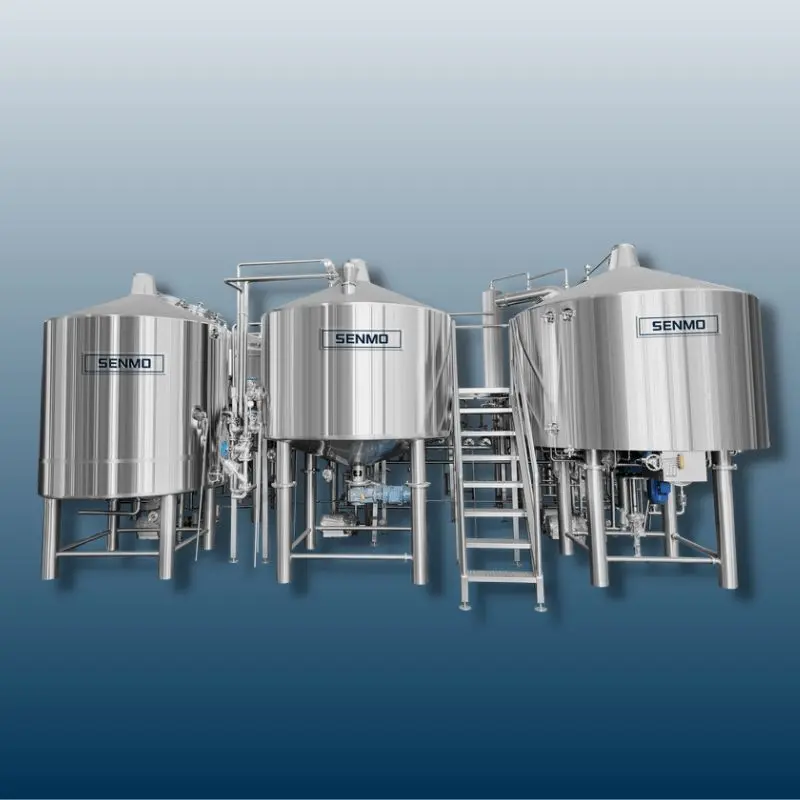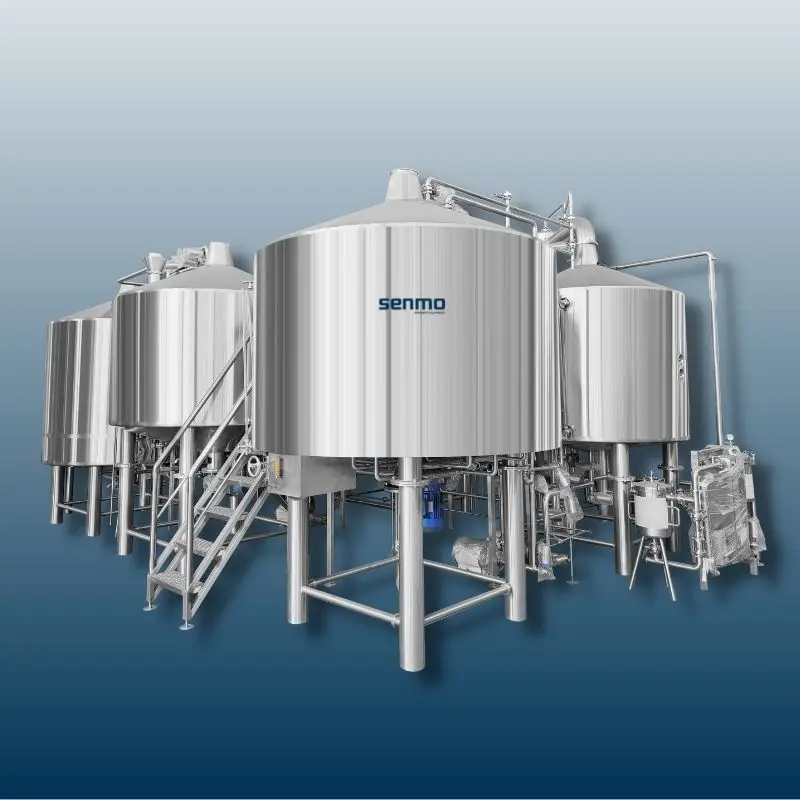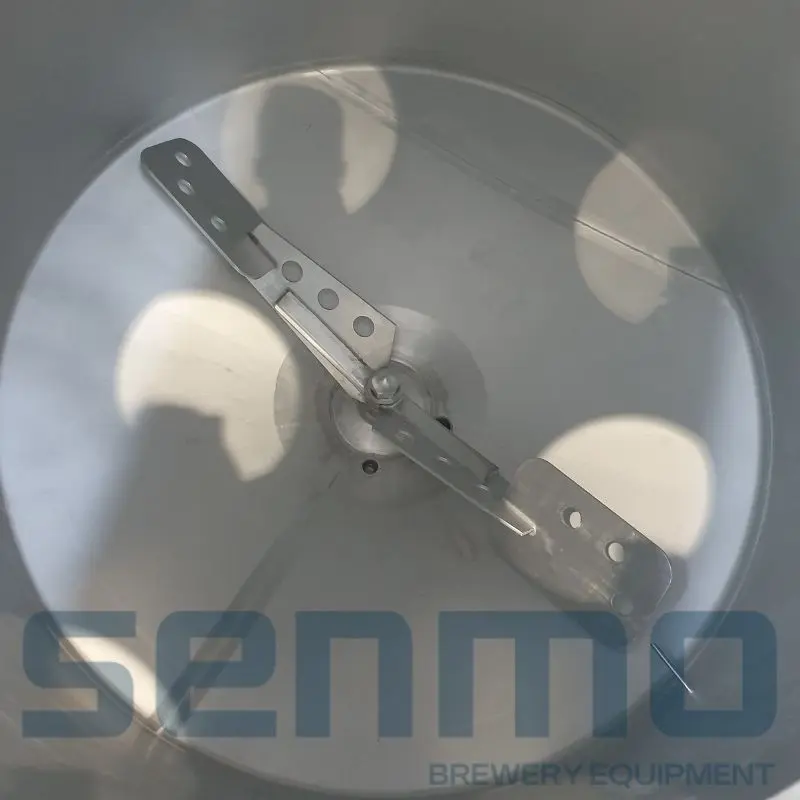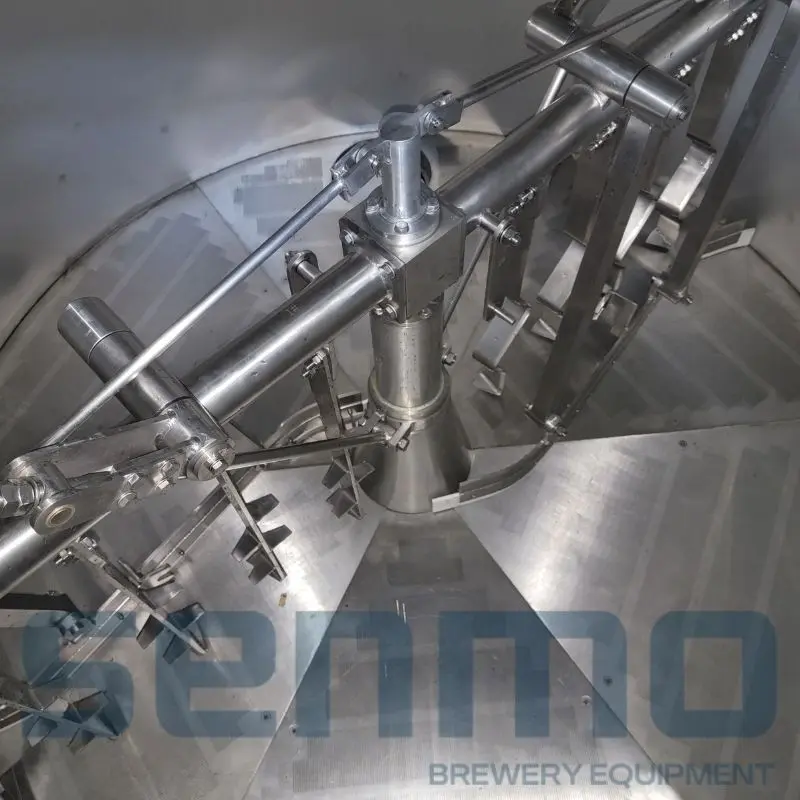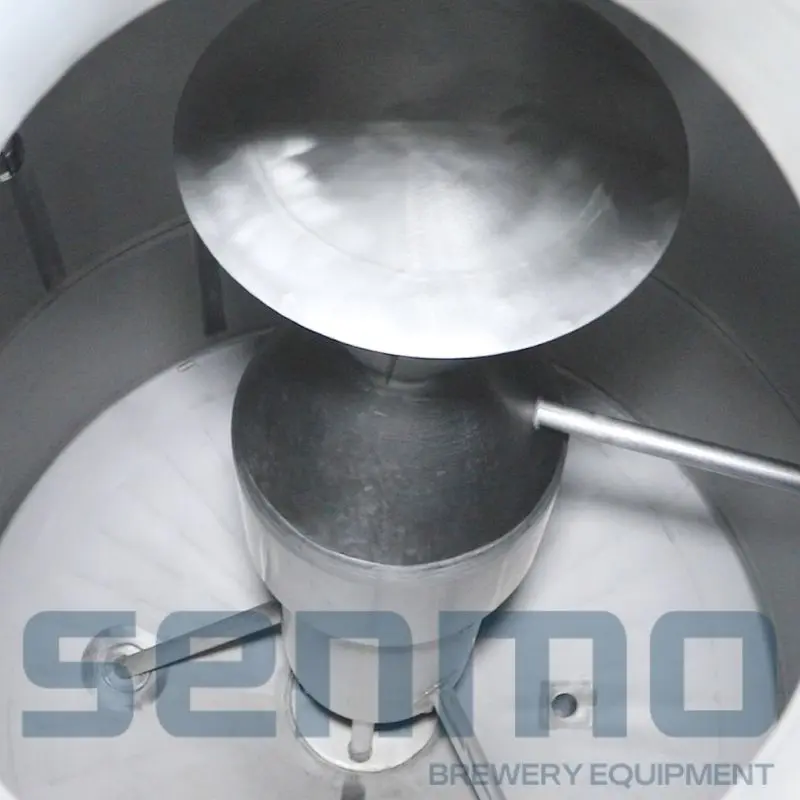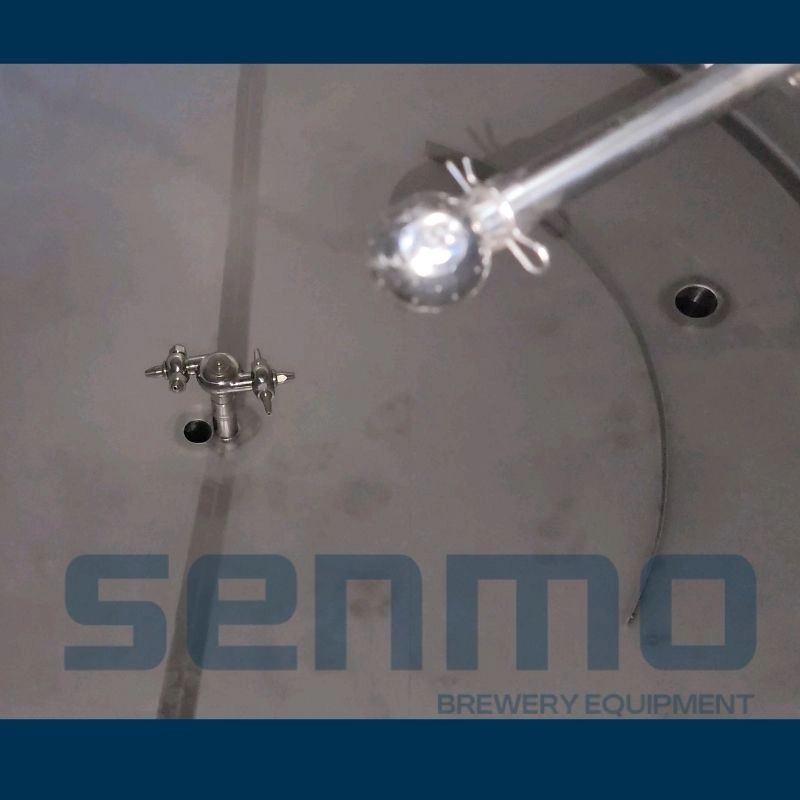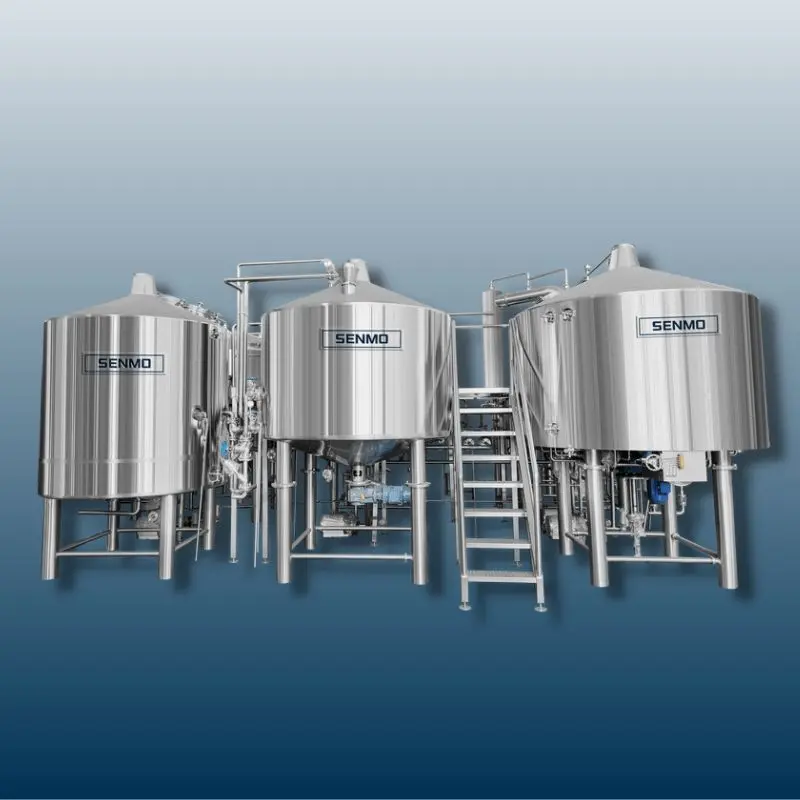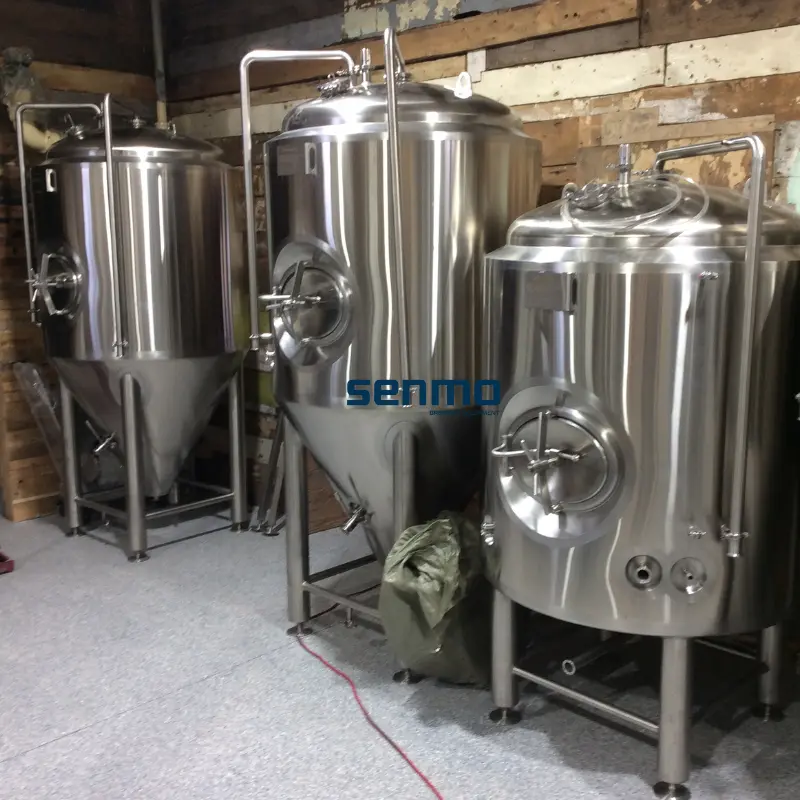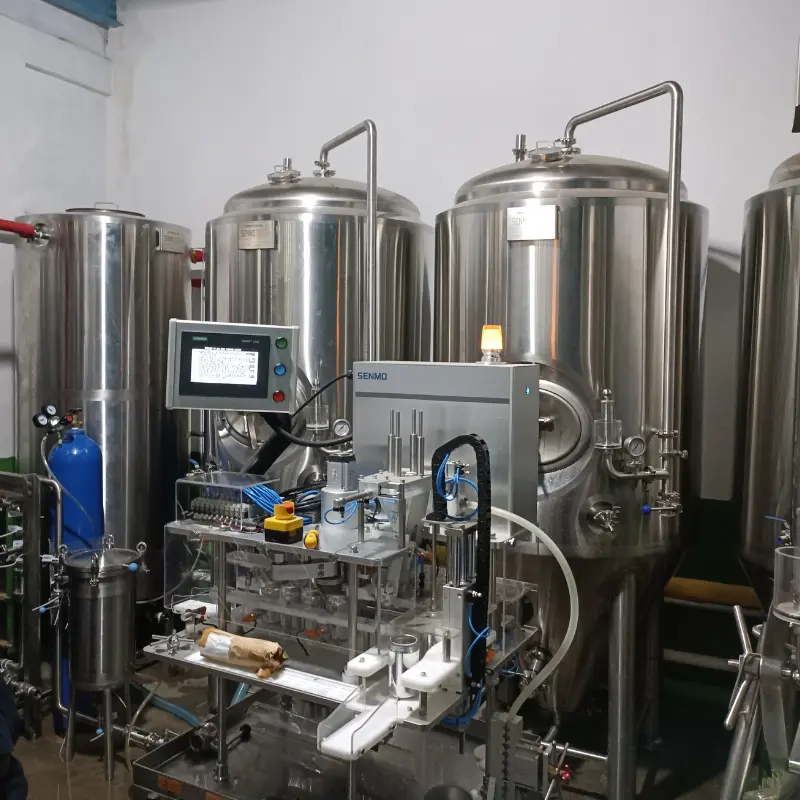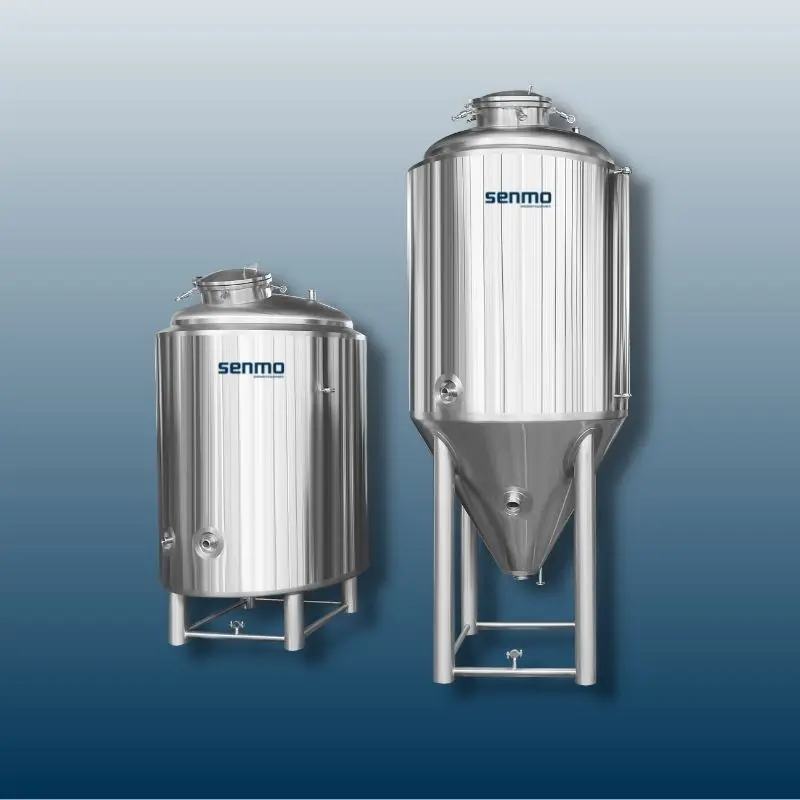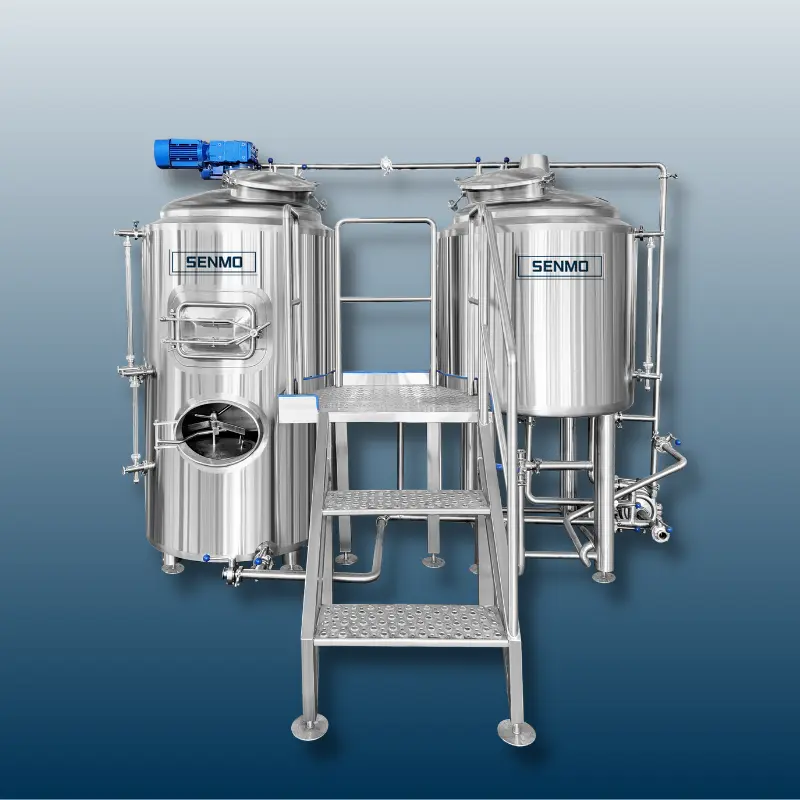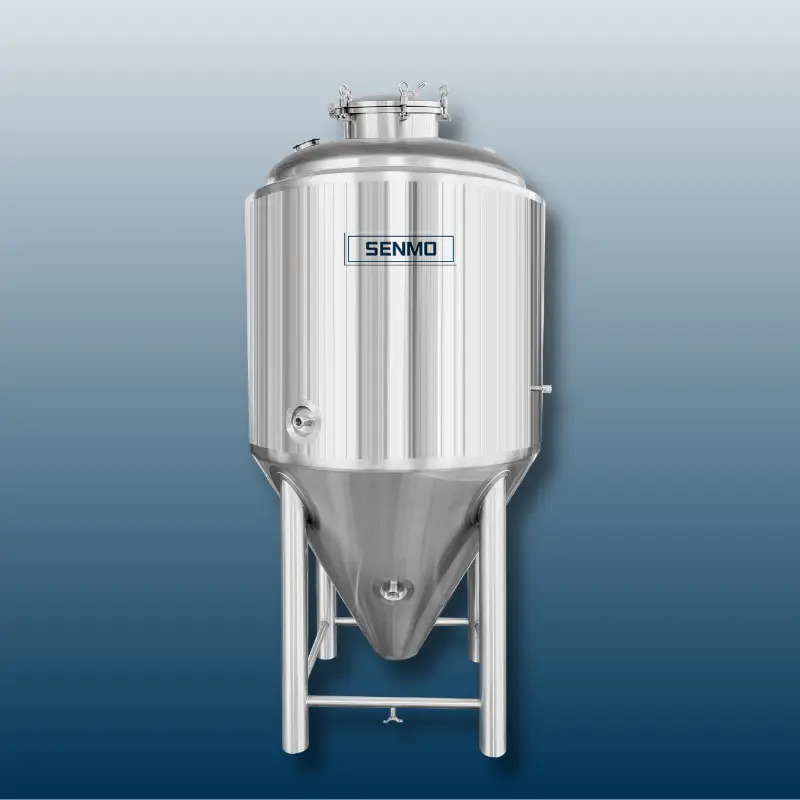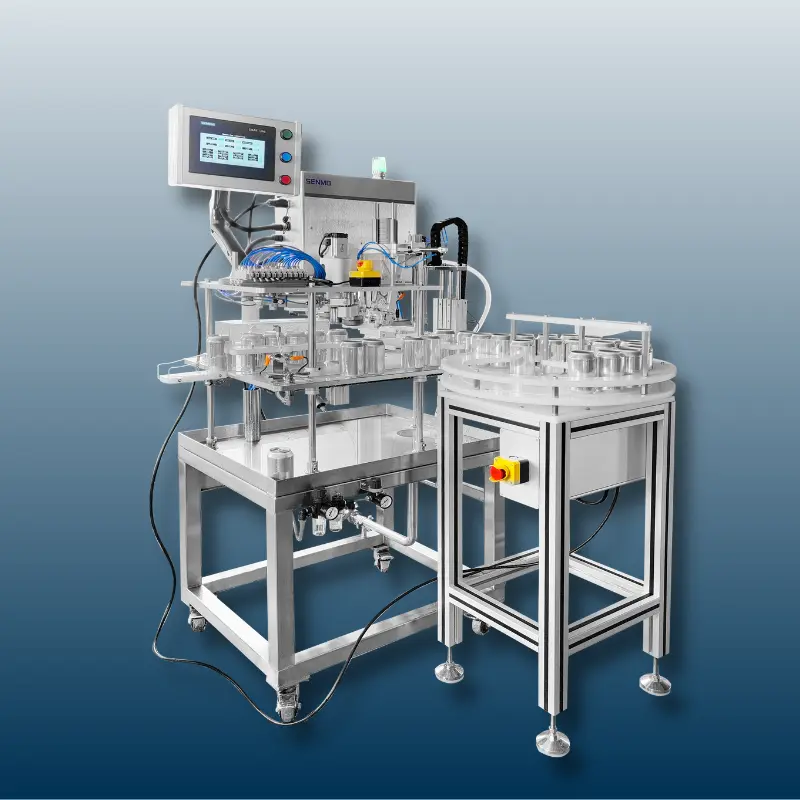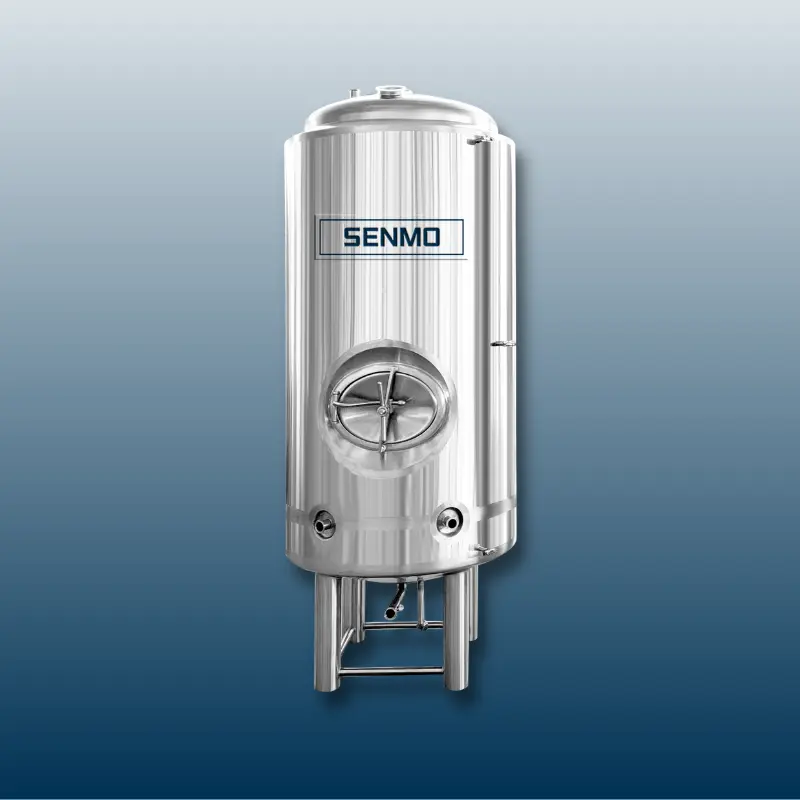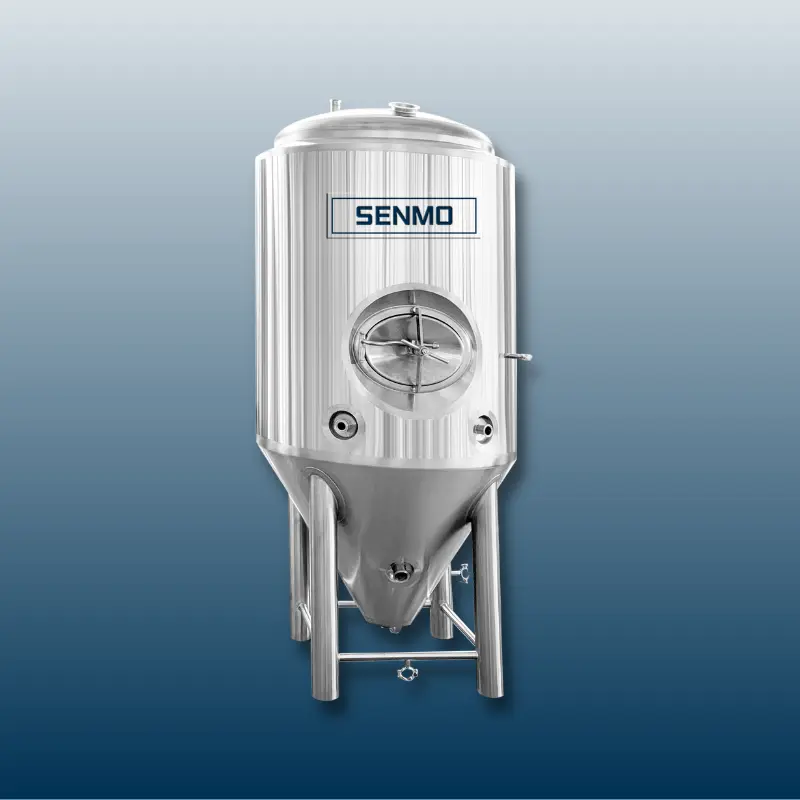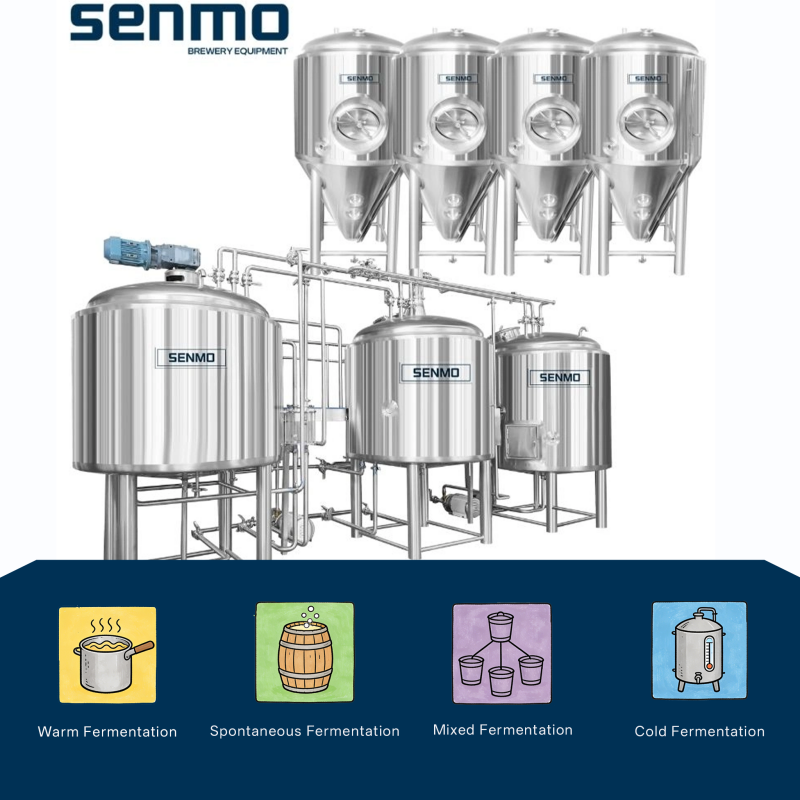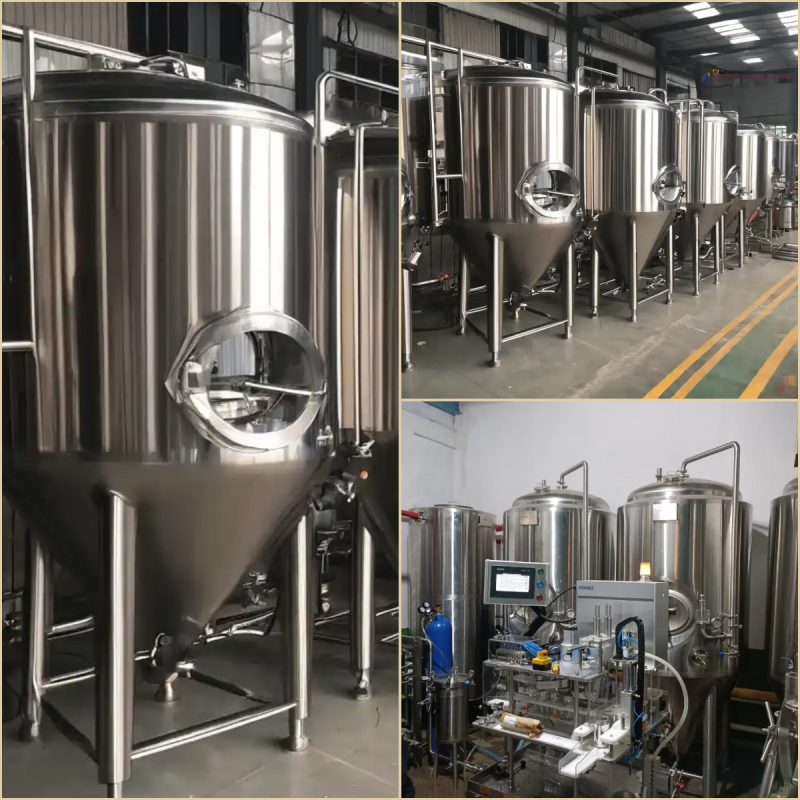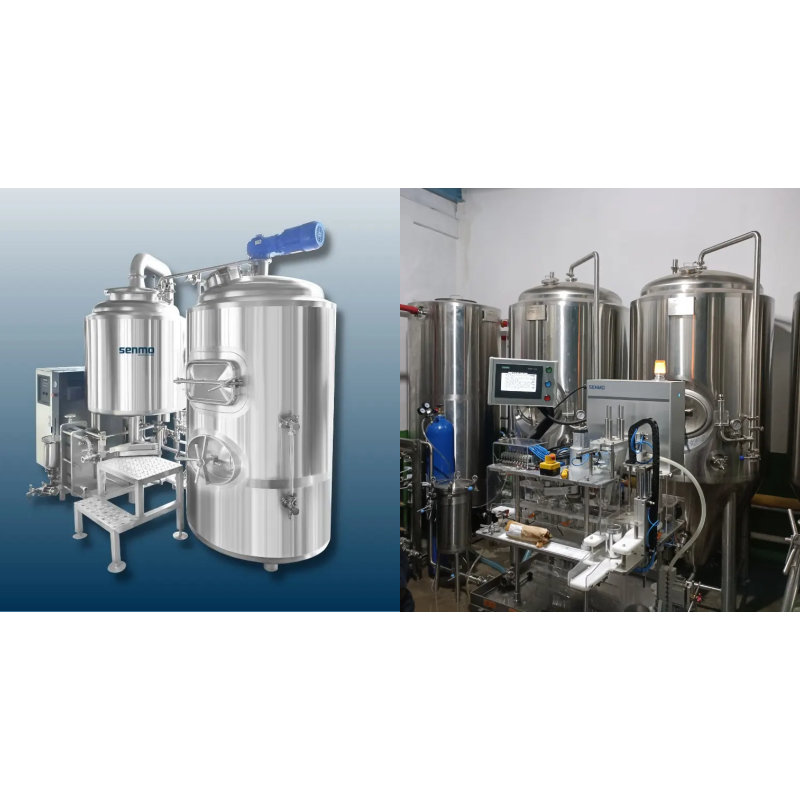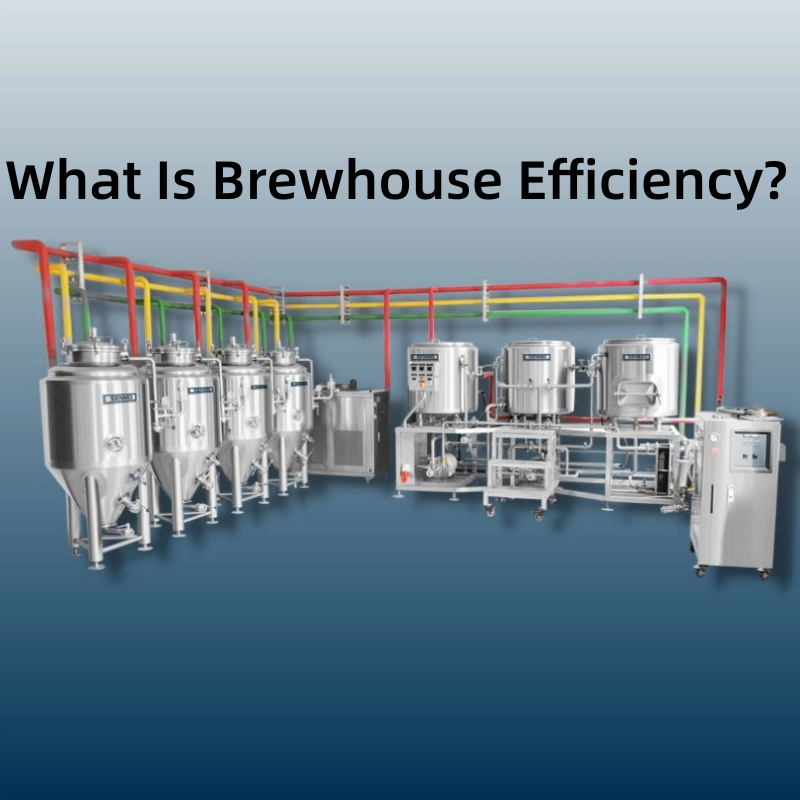In the dynamic world of craft brewing, precision, innovation, and efficiency are key elements that can set a brewery apart. SENMO's 2500L craft beer brewing system stands at the forefront, embodying the perfect blend of art and science.
2500L craft beer brewing system for microbrewery
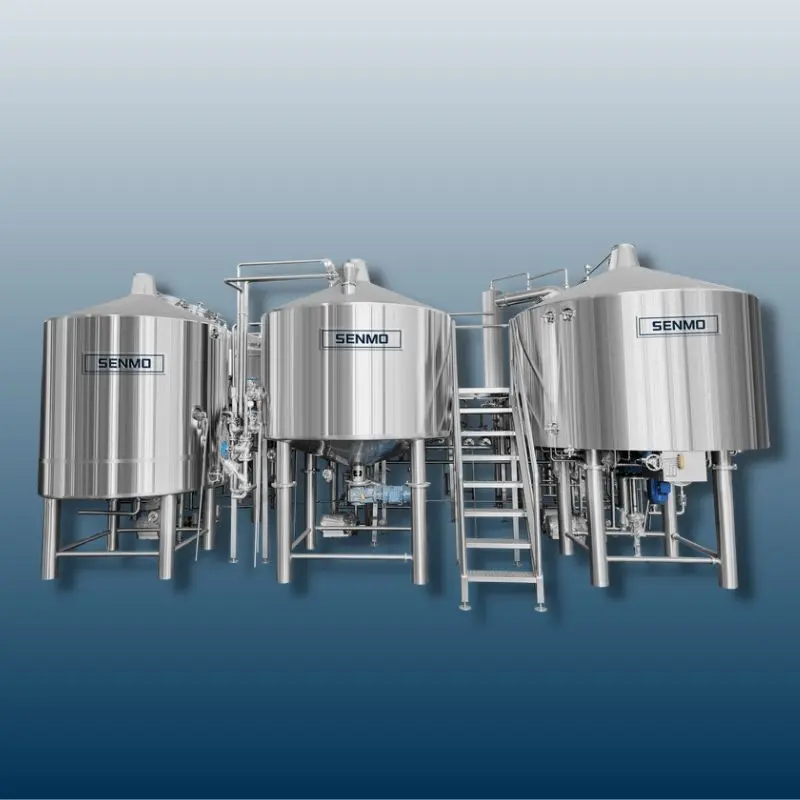
The 2500L craft beer brewing system of microbrewery for sale includes the following items:
2500L mash tun
2500L lauter tun
2500L wort kettle
2500L whirlpool tun
5000L hot water tank
5000L cold water tank
Plate heat exchange
Sanitary stainless steel pipes and valves
Wort pumps
Hop back tank
PLC control panel
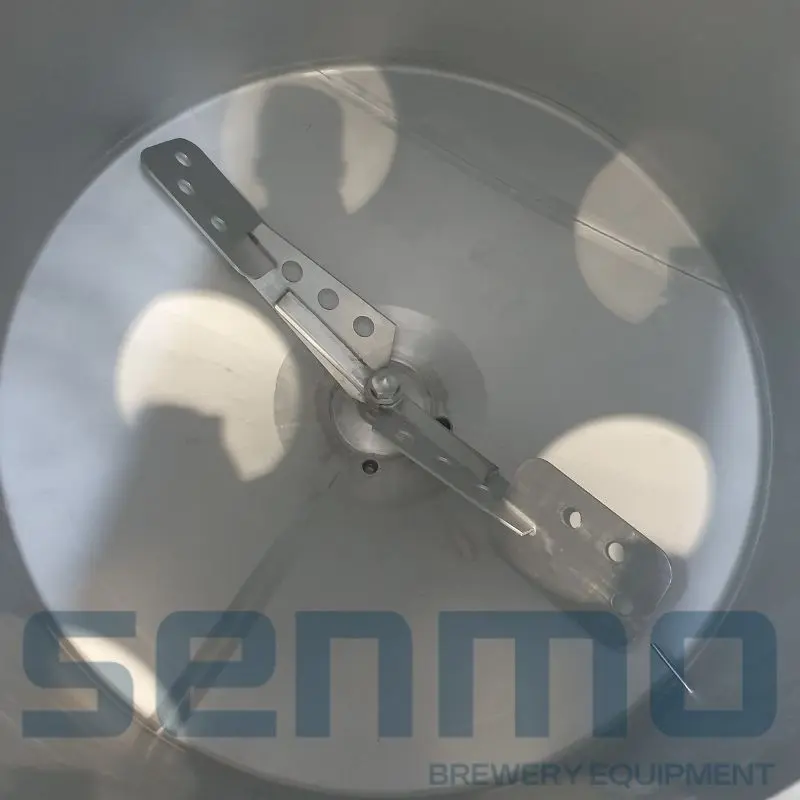
Material:Sanitary food grade 304. The thickness of the plate is 3mm inside and 2mm outside.
Thermal insulation: rock wool thermal insulation,thickness 100mm. Due to the heating function of the equipment, polyurethane insulation will shrink and affect the insulation effect. The minimum thickness of the insulation layer is 80mm
Mixing: Large diameter low-speed mixing blades, suspension reducer and variable frequency control of the mixing speed should be used for mixing to avoid turbulence on the liquid surface during mixing and reduce oxygen absorption of the mash (upper mixing and lower mixing should be reasonably selected according to equipment requirements)
Heating area and method: The heating jacket shall be designed so that the heating steam enters the jacket evenly, and at the same time, it shall prevent the condensate from being discharged unobstructedly, forming a "water hammer" to damage the jacket. Therefore, the jacket shall be semicircular pipe type or honeycomb type, controlled by sections. The steam entering and condensing water leaving shall be multi-point in and out, with a little excessive heating intensity to ensure sufficient heating area, Select a good steam trap (The basic function of the steam trap is to discharge the cold condensed water and air in the steam system as soon as possible, and at the same time automatically prevent steam leakage to the maximum extent. During the process of saccharification and boiling, the amount of condensed water is large. If the drainage capacity is not reached, the condensed water in the jacket will not come out, and then the steam cannot enter, the heating rate will not keep up, and finally the boiling strength will not be reached. Therefore, it is recommended that the drainage capacity of the steam trap is the maximum cold More than twice the condensate. In addition, a three-way gate valve is added in front of the drain valve to drain the condensed water in the pipe and jacket after each startup or cooling to prevent the formation of "water hammer" and damage to the equipment. For those who already have equipment, if they feel that the heating speed of the saccharifying pot or boiling pot is getting slower and slower during use, and they hear the sound of water hitting during the heating process, they should consider the problem of steam trap)
Temperature control: It is better that the equipment is equipped with a directly readable thermometer. And choose different automatic temperature control devices according to their own economic strength (pneumatic angle seat valve temperature control, solenoid valve, etc.)
The structure of the equipment better to have liquid level. The empty capacity is more than 20%. Select a reasonable taper according to the size of the equipment.
Cleaning: the inside of the tank body is smooth and clean without dead corners, especially the welding quality of the welding joint treatment, which is smooth and clean, and the selection of cleaning balls is reasonable
The steam jacket will produce a large amount of condensate, which can be completely recycled. It can be used as softened water of boiler (for equipment with large capacity, it is recommended to add pipeline steam condensate recovery system to save energy consumption of boiler)
The material pipeline design is reasonable.
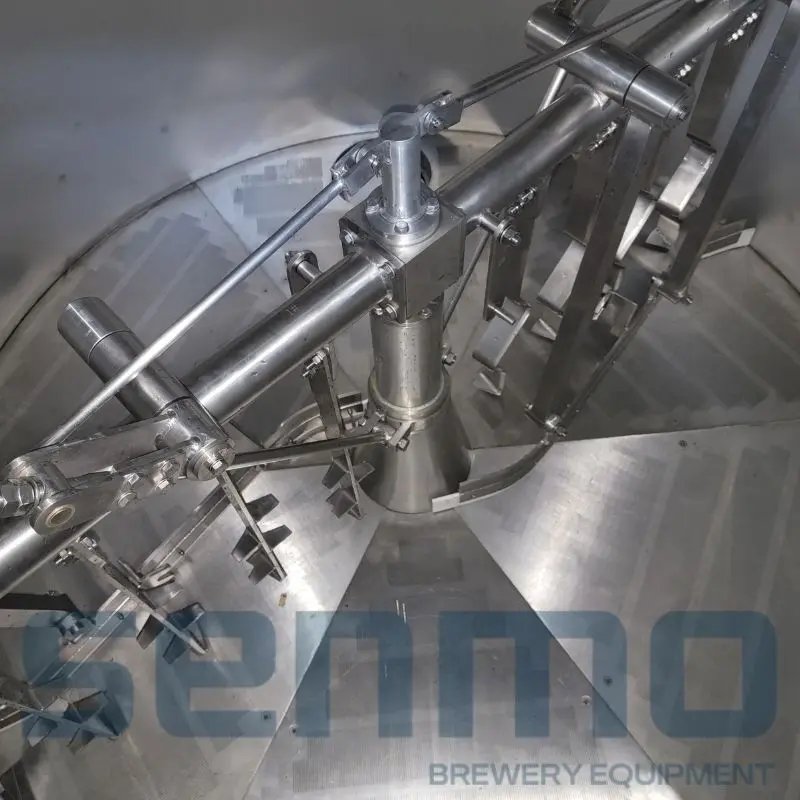
The feeding port of the equipment is located at the bottom or side of the tank, and the feeding speed should be less than 1.2m/s; The wort reflux port is located at the bottom or upper part of the tank, so the wort should not absorb oxygen and impact the lees layer during reflux; The wort collecting port is conical design, ≥ 1.2 pieces/m2, evenly distributed; The diameter and number of the drainage openings affect the drainage speed, and the design is to drain the wheat grains in the trough within 12 minutes; Filter function shall be available after the drain opening is closed. The wort collecting pipe is designed according to the principle of fluid mechanics, so that the wort can flow out in the same state in each collecting pipe; Screen plate: it is a machine milling screen plate. The screen plate hole is of ladder design, with a hole width of 0.7mm. After installation, the gap between the screen plates and between the screen plate and the tank is ≤ 0.7mm.
The cultivator blade is designed as a straight or cross shaped cultivator arm, which shall have rotation and lifting functions, and can be controlled continuously or in sections.
Nozzle type or central distribution cup type can be used for washing the grains, requiring large flow without impacting the grains layer.
The main shaft seal adopts high position seal, and the sealing surface is above the liquid level without leakage.
The liquid level control adopts the design of balance column (tank) or differential pressure to avoid the formation of slagging.
The total operation time shall be controlled within 180 min. The thickness of the lees layer is 220mm-400mm, meeting the needs of many varieties of fine brewing. Residual sugar from washing lees ≤ 2.5 ° P. Wort turbidity ≤ 20EBC.
In addition. There are generally two forms of filtration: suction filtration and natural filtration. If the high level difference cannot be formed, the natural filtration cannot be carried out. Generally, we will use the wort balance tank.
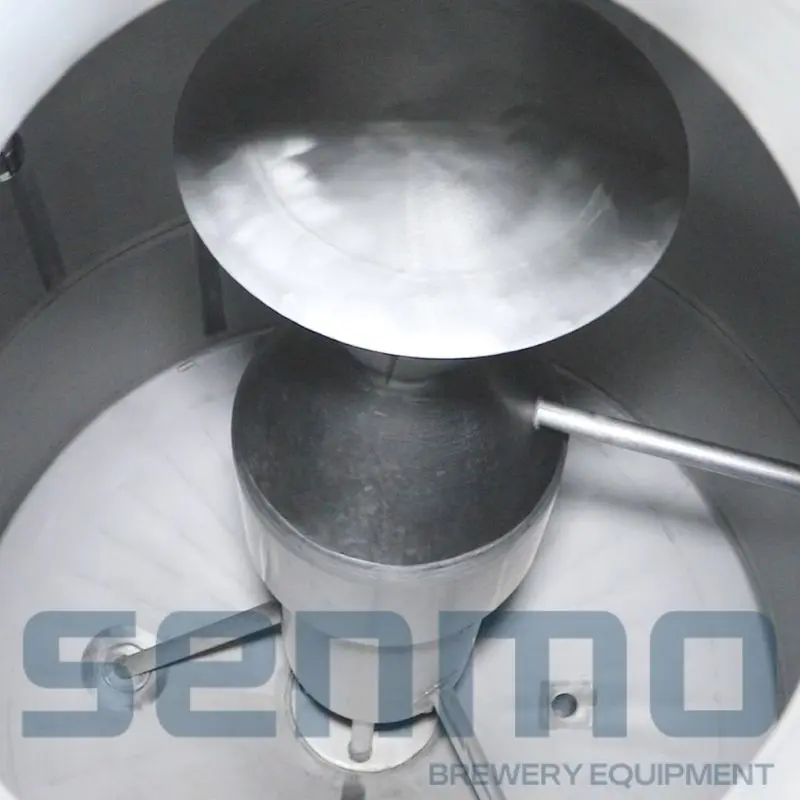
The heating methods include boiler jacket, internal heater, external heater, etc. The deflector covers are of single-layer multi-channel and double-layer spherical type.
A device for adding hops and auxiliary materials (such as orange peel, pepper, honey, etc.) is provided.
The common boiling methods include normal pressure boiling, low pressure boiling, low pressure dynamic boiling, forced circulation boiling and different combinations of the above boiling methods.
Whether it is low pressure boiling or low pressure dynamic boiling, it belongs to pressure boiling, and the design of the pot is different from that of normal pressure.
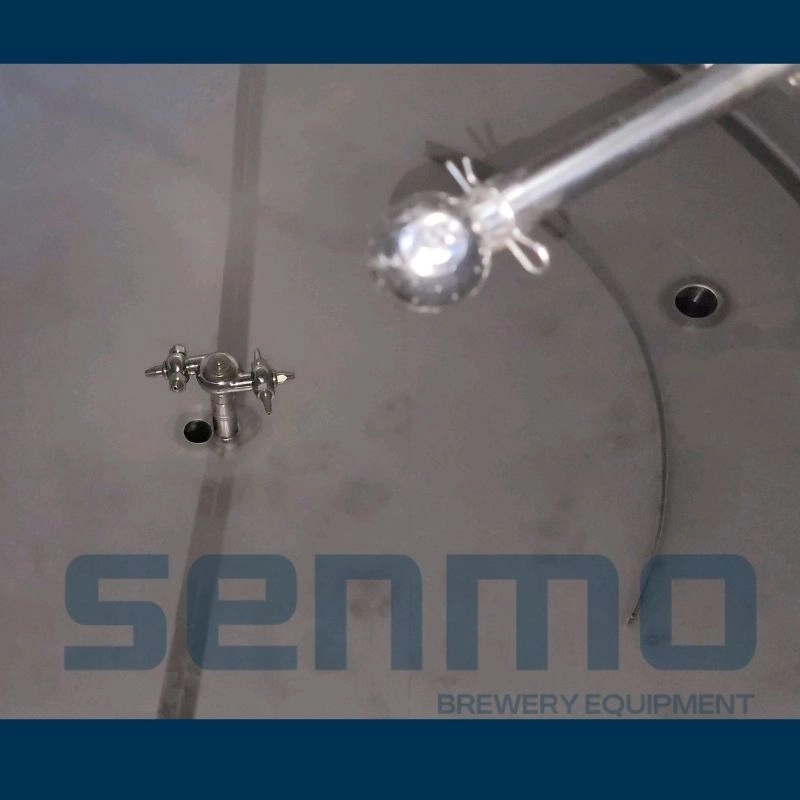
The 2500L whirlpool tank makes use of centrifugal force and gravity to make the thermal solidification and hops residue formed during boiling gradually gather in the center of the tank during sedimentation, forming steamed bread like sediment, so as to achieve solid-liquid separation.
The feed inlet is designed with an angle of 15 ° - 25 ° from the tangent direction, so as to avoid friction between wort and the tank wall when entering the tank, loss of kinetic energy, interference with wort rotation in the tank, formation of local turbulence, and impact on the sedimentation of particles.
There is a sloping bottom structure on the tank bottom structure, and the entire tank bottom inclines to the drain outlet with a slope of 2%; There is also a trough pan bottom structure. The trough bottom forms a slope of 2% from the center to the periphery, and a wort collecting tank with a slope is set in the circumference.
If you want to learn more about microbrewery 2500L craft beer brewing system for sale,please send us inquiry,we will send you detailed proposal on it.Cheers!
FAQ
Here's a set of frequently asked questions (FAQ) that might arise when planning a 2500L craft beer brewing system for a microbrewery:
1. Brewing Equipment:
a. Q: What is the ideal material for brewing vessels?
- A: Stainless steel is commonly used for brewing vessels due to its durability, corrosion resistance, and ease of cleaning.
b. Q: Do I need separate vessels for mashing and boiling, or can I combine them?
- A: While some breweries use combined vessels (brew kettles with mash capabilities), separate vessels (mash tuns and brew kettles) offer more flexibility and control over the brewing process.
c. Q: What size fermenters should I choose for a 2500L batch size?
- A: Select fermenters with a capacity slightly larger than your batch size to accommodate foaming during fermentation. Consider future expansion plans as well.
2. Utilities and Infrastructure:
a. Q: How critical is water quality for brewing?
- A: Water quality significantly impacts beer flavor. It's crucial to test and, if needed, treat your water to meet the specific requirements of the beer style.
b. Q: What electrical specifications should I consider for the brewing equipment?
- A: Ensure adequate power supply for the brewhouse equipment. Consult equipment manuals for specific electrical requirements.
3. Regulatory Compliance:
a. Q: What licenses do I need to operate a microbrewery?
- A: Licensing requirements vary by location. Check with local and national authorities to determine the necessary permits for production, distribution, and sales.
b. Q: Are there specific labeling requirements for craft beer?
- A: Yes, labeling regulations often include details about alcohol content, ingredients, and health warnings. Familiarize yourself with local labeling laws.
4. Quality Control:
a. Q: How can I maintain consistency in beer quality?
- A: Implement strict quality control measures, including regular testing of raw materials, monitoring fermentation parameters, and sensory evaluation.
b. Q: How do I identify and address potential contaminants in the brewing process?
- A: Develop a comprehensive cleaning and sanitization protocol. Regularly test for contaminants and adjust cleaning procedures as needed.
5. Marketing and Branding:
a. Q: Should I invest in a taproom or focus on distribution?
- A: The decision depends on your business model and local market. A taproom can build brand loyalty and provide direct customer feedback, while distribution expands your reach.
b. Q: How important is branding in the craft beer industry?
- A: Strong branding helps differentiate your brewery and attract consumers. Invest in a memorable logo, label design, and overall brand identity.
6. Miscellaneous:
a. Q: How can I stay informed about industry trends and innovations?
- A: Join brewing associations, attend industry events, and engage with online brewing communities. Subscribe to industry publications for the latest information.
b. Q: What is the typical timeline for setting up a microbrewery?
- A: Timelines vary, but it generally takes several months to a year to plan, acquire equipment, obtain permits, and start brewing.
Feel free to customize these FAQs based on your specific circumstances and address any unique aspects of your microbrewery.
